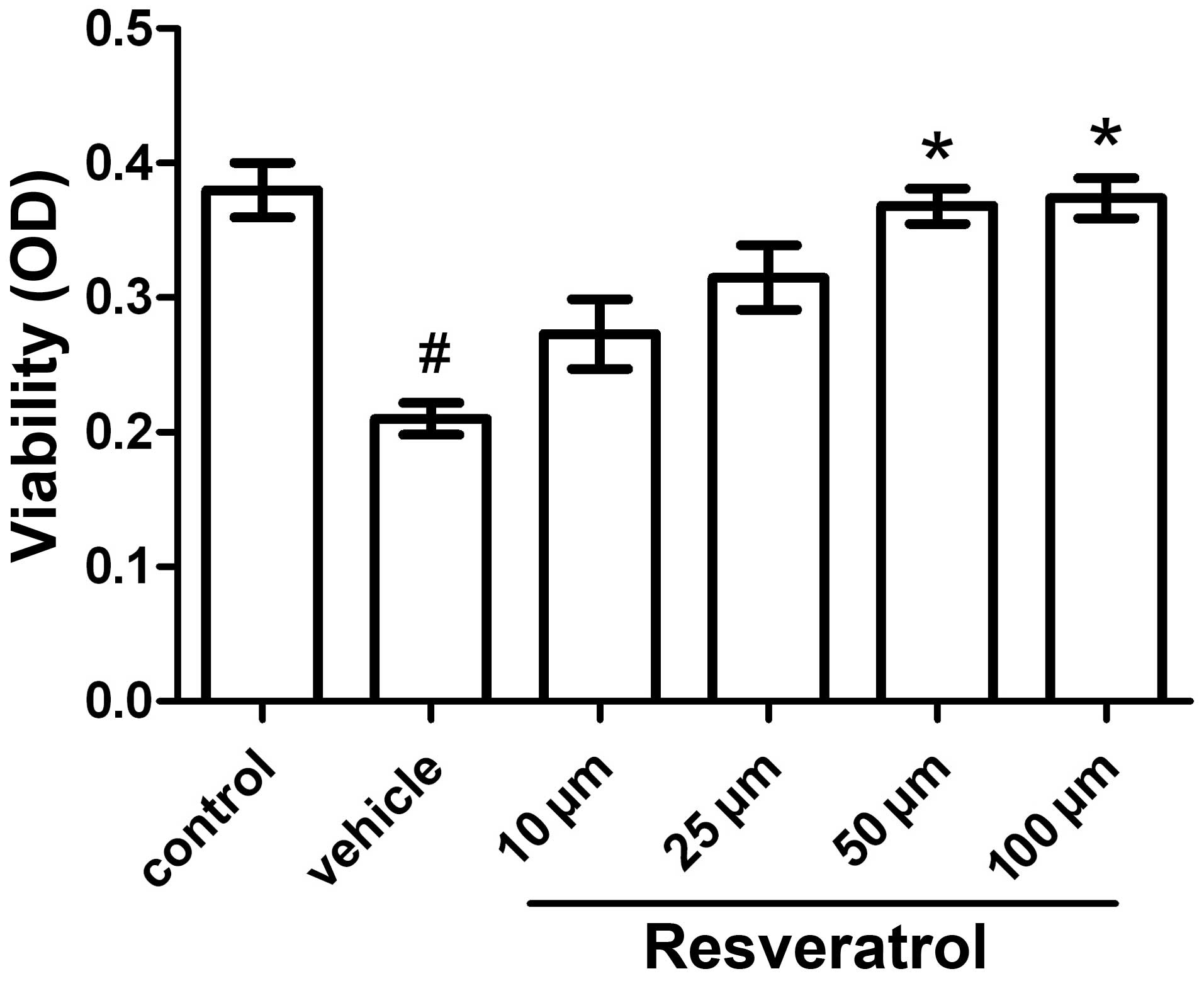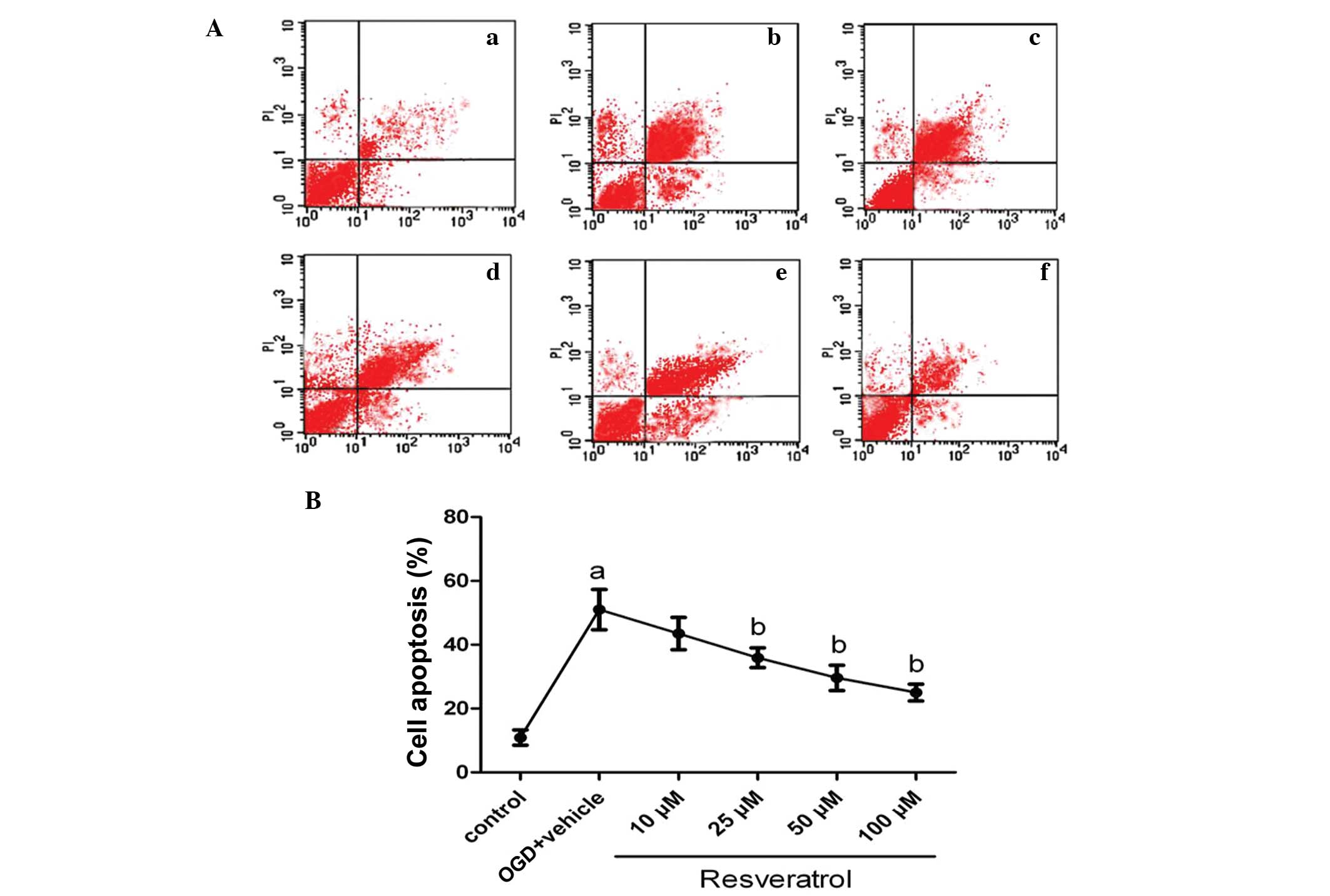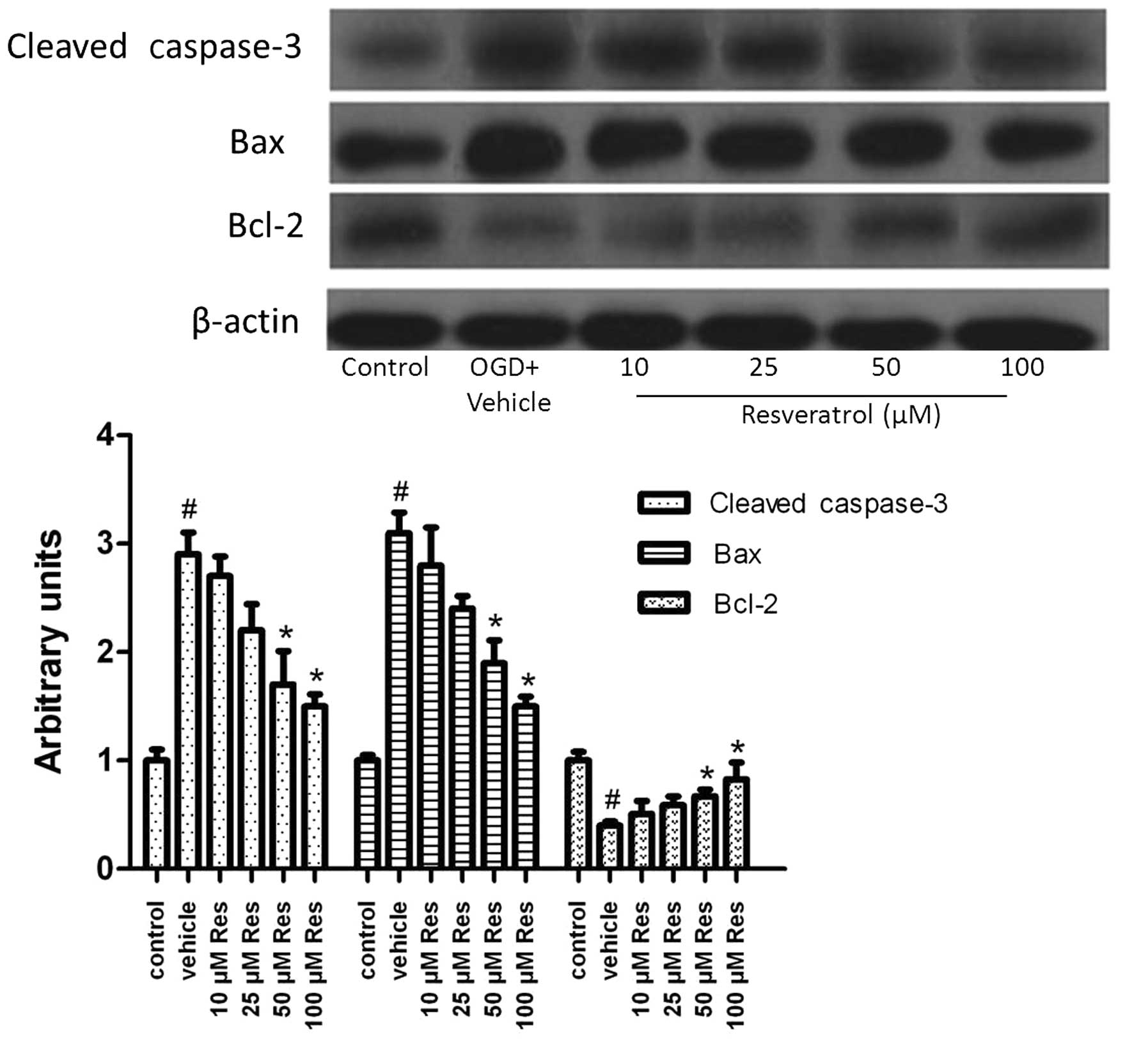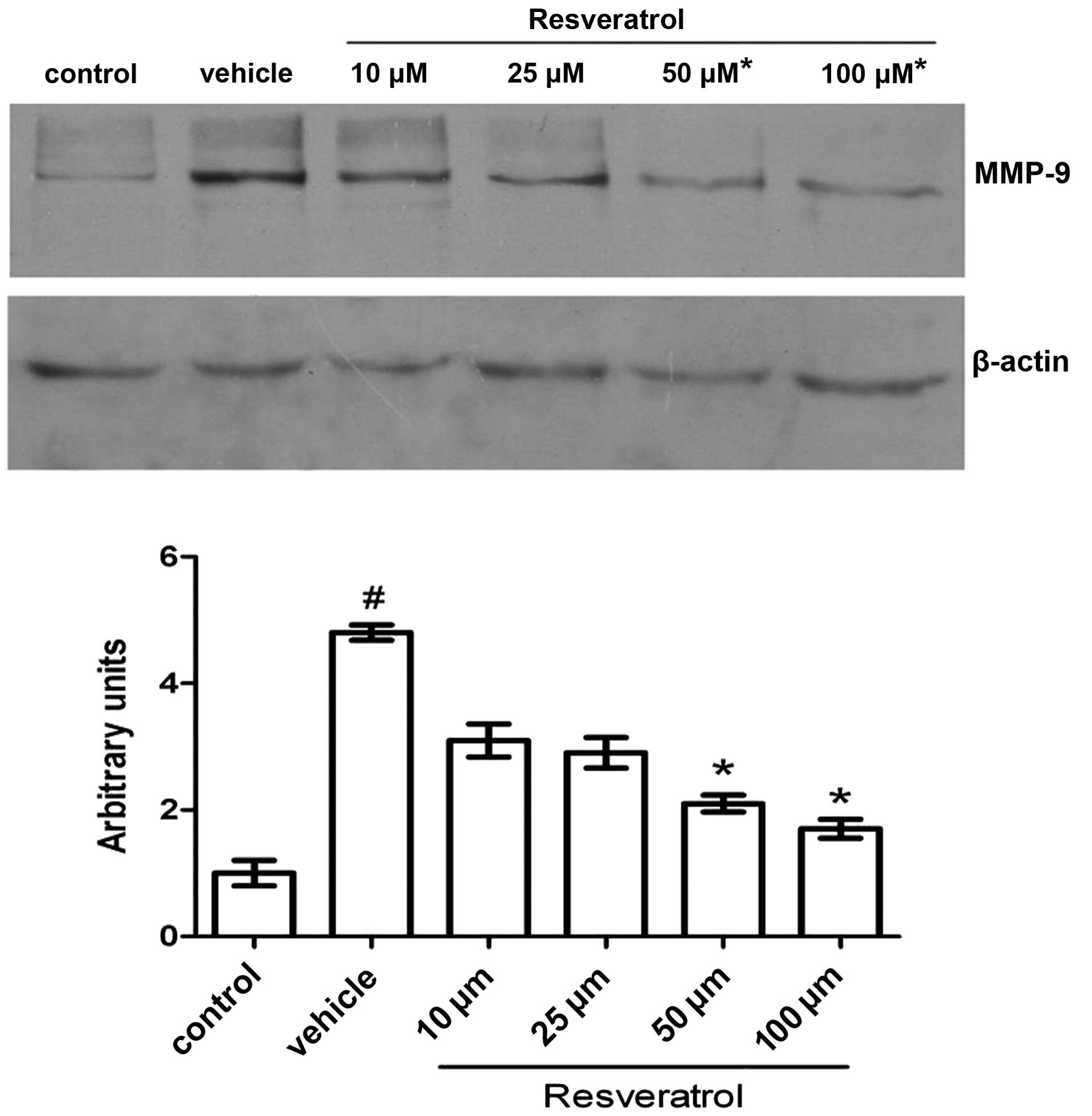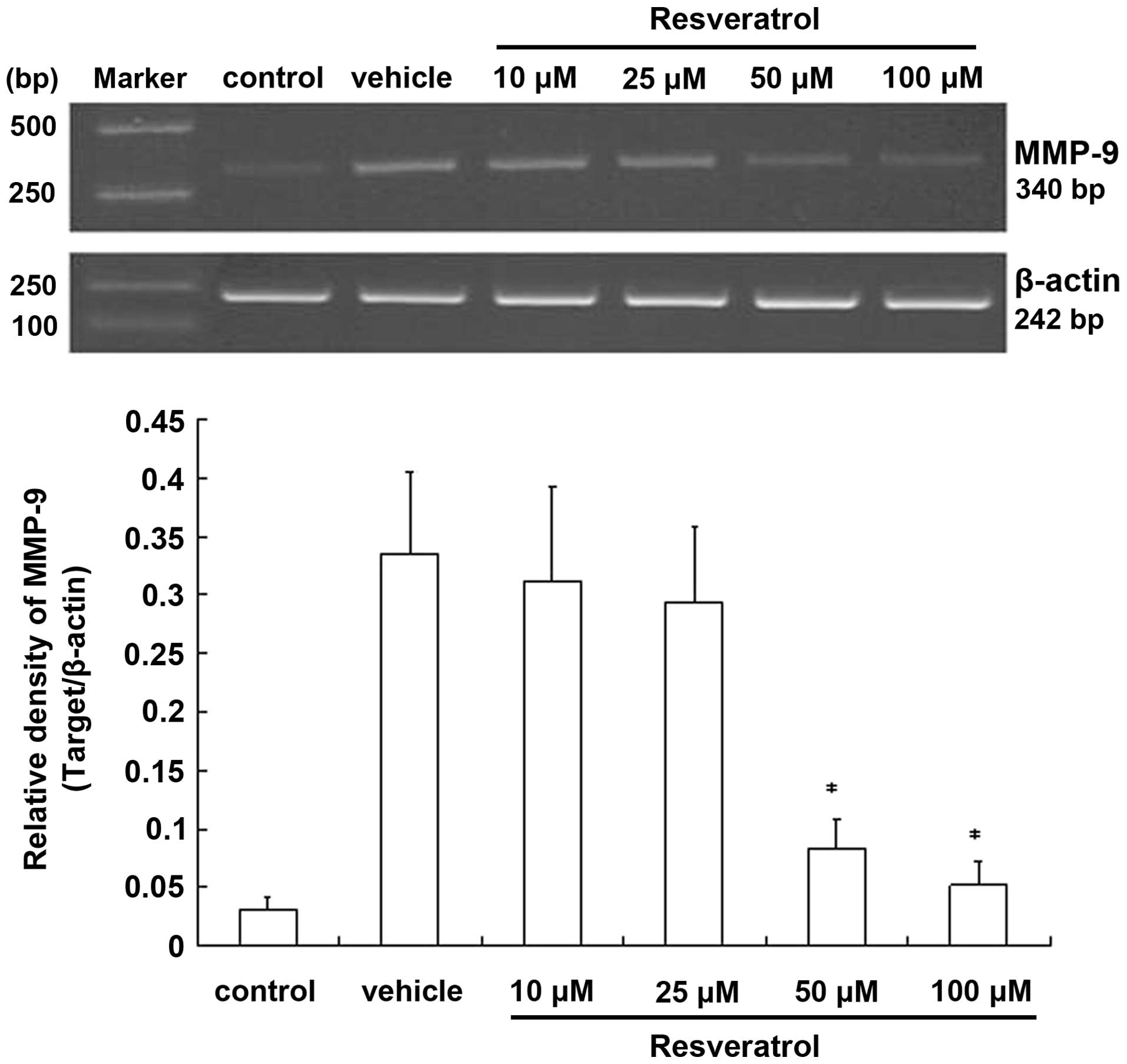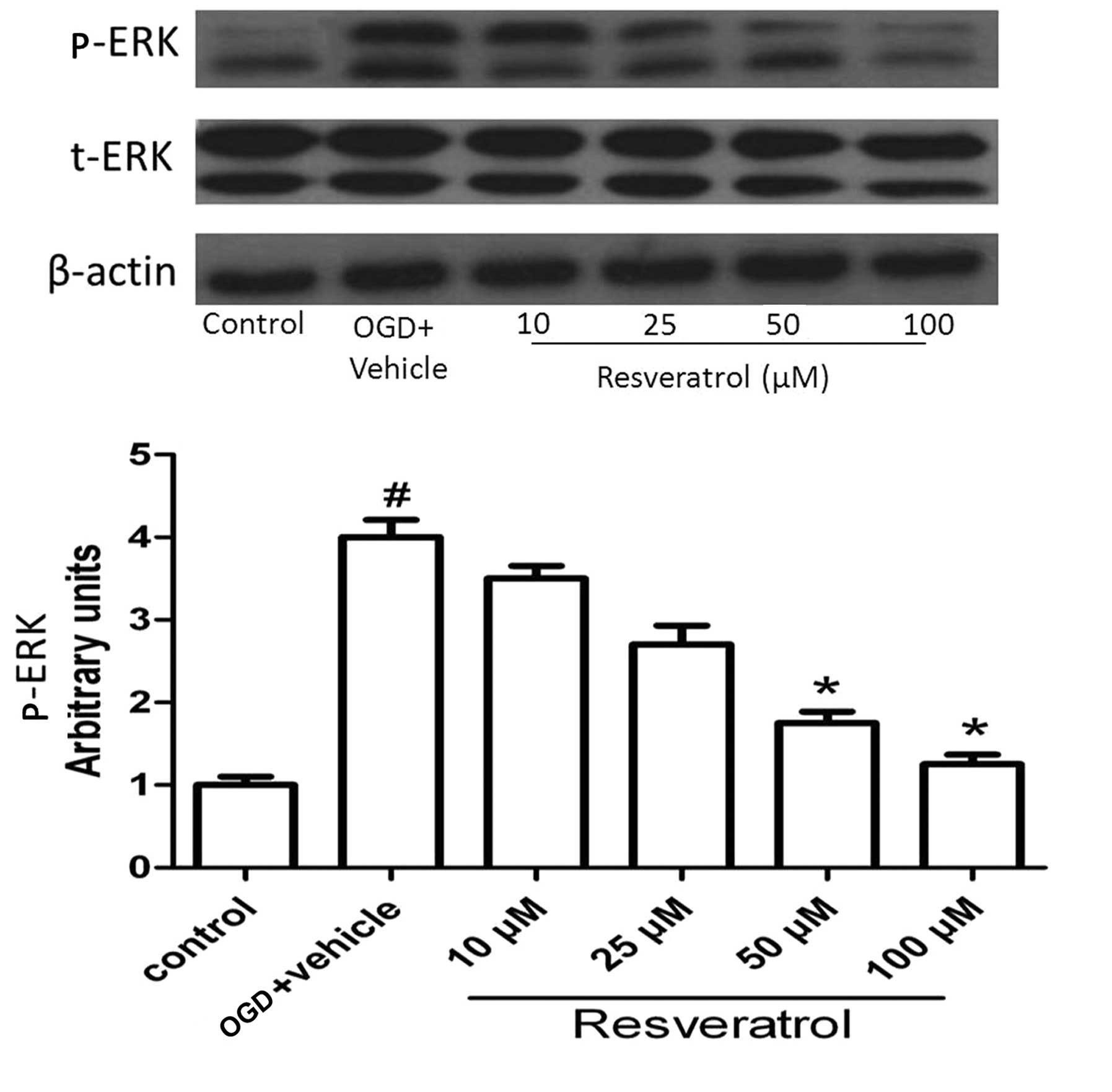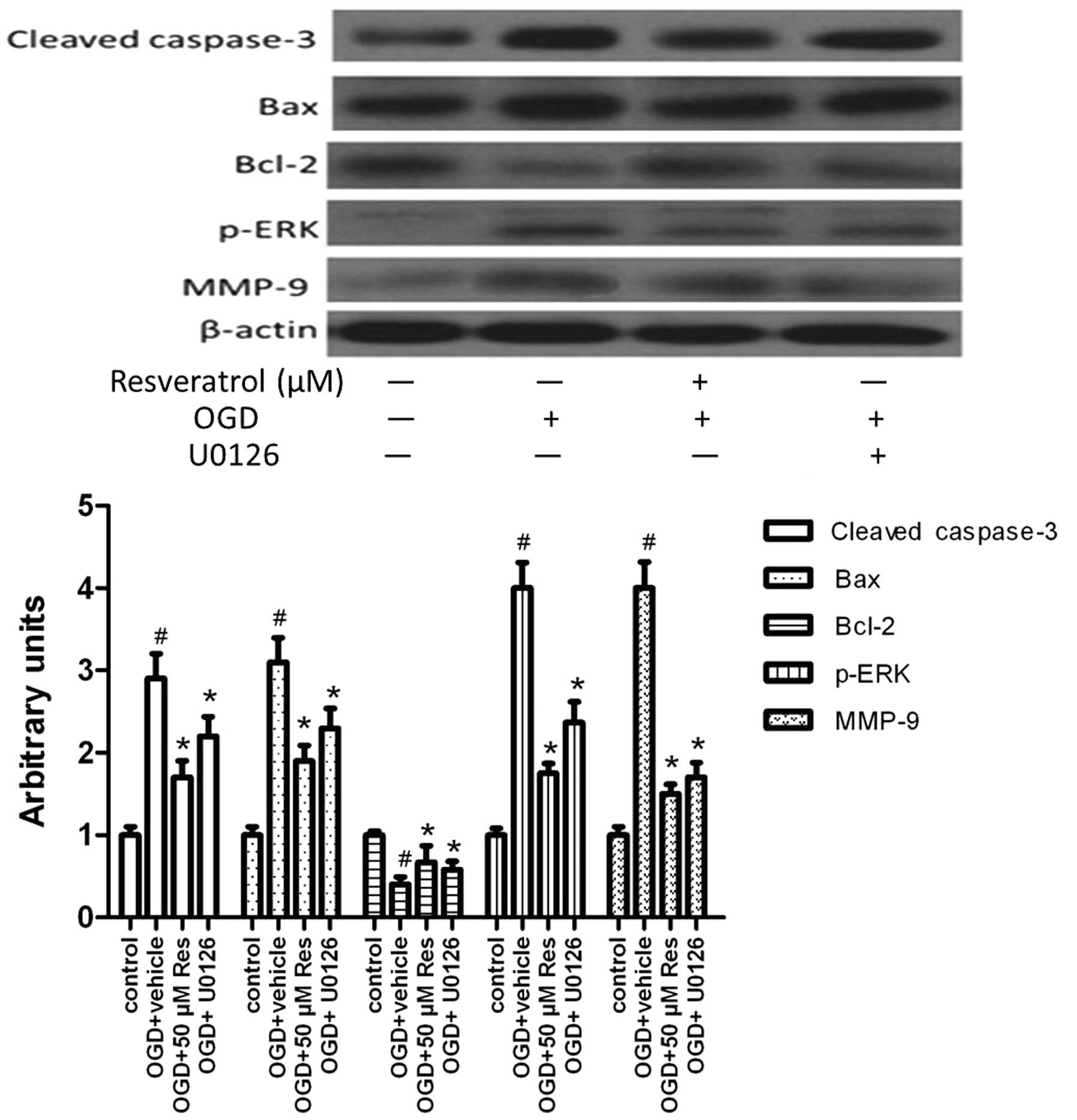|
1
|
Celotti E, Ferrarini R, Zironi R, et al:
Resveratrol content of some wines obtained from dried Valpolicella
grapes: Recioto and Amarone. J Chromatogr A. 730:47–52. 1996.
View Article : Google Scholar : PubMed/NCBI
|
|
2
|
Pany S, Majhi A and Das J: PKC activation
by resveratrol derivatives with unsaturated aliphatic chain. PLoS
One. 7:e528882012. View Article : Google Scholar : PubMed/NCBI
|
|
3
|
Das J, Pany S and Majhi A: Chemical
modifications of resveratrol for improved protein kinase C alpha
activity. Bioorg Med Chem. 19:5321–5333. 2011. View Article : Google Scholar : PubMed/NCBI
|
|
4
|
Kesherwani V, Atif F, Yousuf S, et al:
Resveratrol protects spinal cord dorsal column from hypoxic injury
by activating Nrf-2. Neuroscience. 241:80–88. 2013. View Article : Google Scholar : PubMed/NCBI
|
|
5
|
Huang SS, Tsai MC, Chih CL, et al:
Resveratrol reduction of infarct size in Long-Evans rats subjected
to focal cerebral ischemia. Life Sci. 69:1057–1065. 2001.
View Article : Google Scholar : PubMed/NCBI
|
|
6
|
Wang Q, Xu J, Rottinghaus GE, et al:
Resveratrol protects against global cerebral ischemic injury in
gerbils. Brain Res. 958:439–447. 2002. View Article : Google Scholar : PubMed/NCBI
|
|
7
|
Doyle GA, Pierce RA and Parks WC:
Transcriptional induction of collagenase-1 in differentiated
monocyte-like (U937) cells is regulated by AP-1 and an upstream
C/EBP-beta site. J Biol Chem. 272:11840–11849. 1997. View Article : Google Scholar : PubMed/NCBI
|
|
8
|
Lu X, Xu H, Sun B, et al: Enhanced
neuroprotective effects of resveratrol delivered by nanoparticles
on hydrogen peroxide-induced oxidative stress in rat cortical cell
culture. Mol Pharm. 10:2045–2053. 2013. View Article : Google Scholar : PubMed/NCBI
|
|
9
|
de la Torre E, Hovsepian E, Penas FN, et
al: Macrophages derived from septic mice modulate nitric oxide
synthase and angiogenic mediators in the heart. J Cell Physiol.
228:1584–1593. 2013.PubMed/NCBI
|
|
10
|
Pfefferkorn T and Rosenberg GA: Closure of
the blood-brain barrier by matrix metalloproteinase inhibition
reduces rtPA-mediated mortality in cerebral ischemia with delayed
reperfusion. Stroke. 34:2025–2030. 2003. View Article : Google Scholar
|
|
11
|
Dufour A and Overall CM: Missing the
target: matrix metalloproteinase antitargets in inflammation and
cancer. Trends Pharmacol Sci. 34:233–242. 2013. View Article : Google Scholar : PubMed/NCBI
|
|
12
|
Saarialho-Kere UK, Welgus HG and Parks WC:
Distinct mechanisms regulate interstitial collagenase and 92-kDa
gelatinase expression in human monocytic-like cells exposed to
bacterial endotoxin. J Biol Chem. 268:17354–17361. 1993.
|
|
13
|
Nagaoka I and Hirota S: Increased
expression of matrix metalloproteinase-9 in neutrophils in
glycogen-induced peritoneal inflammation of guinea pigs. Inflamm
Res. 49:55–62. 2000. View Article : Google Scholar : PubMed/NCBI
|
|
14
|
Nguyen M, Arkell J and Jackson CJ: Human
endothelial gelatinases and angiogenesis. Int J Biochem Cell Biol.
33:960–970. 2001. View Article : Google Scholar : PubMed/NCBI
|
|
15
|
Cayabyab FS, Gowribai K and Walz W:
Involvement of matrix metalloproteinases-2 and -9 in the formation
of a lacuna-like cerebral cavity. J Neurosci Res. 91:920–933. 2013.
View Article : Google Scholar : PubMed/NCBI
|
|
16
|
Vu TH, Shipley JM, Bergers G, et al:
MMP-9/gelatinase B is a key regulator of growth plate angiogenesis
and apoptosis of hypertrophic chondrocytes. Cell. 93:411–422. 1998.
View Article : Google Scholar : PubMed/NCBI
|
|
17
|
Gao D, Zhang X, Jiang X, et al:
Resveratrol reduces the elevated level of MMP-9 induced by cerebral
ischemia-reperfusion in mice. Life Sci. 78:2564–2570. 2006.
View Article : Google Scholar : PubMed/NCBI
|
|
18
|
Tauskela JS, Comas T, Hewitt K, et al:
Cross-tolerance to otherwise lethal N-methyl-D-aspartate and
oxygen-glucose deprivation in preconditioned cortical cultures.
Neuroscience. 107:571–584. 2001. View Article : Google Scholar : PubMed/NCBI
|
|
19
|
Gong QH, Wang Q, Shi JS, et al: Inhibition
of caspases and intracellular free Ca2+ concentrations
are involved in resveratrol protection against apoptosis in rat
primary neuron cultures. Acta Pharmacol Sin. 28:1724–1730.
2007.PubMed/NCBI
|
|
20
|
Cagnol S and Chambard JC: ERK and cell
death: mechanisms of ERK-induced cell death - apoptosis, autophagy
and senescence. FEBS J. 277:2–21. 2010. View Article : Google Scholar : PubMed/NCBI
|
|
21
|
Schaller B and Graf R: Cerebral ischemia
and reperfusion: the pathophysiologic concept as a basis for
clinical therapy. J Cereb Blood Flow Metab. 24:351–371. 2004.
View Article : Google Scholar : PubMed/NCBI
|
|
22
|
Moskowitz MA, Lo EH and Iadecola C: The
science of stroke: mechanisms in search of treatments. Neuron.
67:181–198. 2010. View Article : Google Scholar : PubMed/NCBI
|
|
23
|
Hayashi T and Abe K: Ischemic neuronal
cell death and organellae damage. Neurol Res. 26:827–834. 2004.
View Article : Google Scholar : PubMed/NCBI
|
|
24
|
Fujimura M, Tominaga T and Chan PH:
Neuroprotective effect of an antioxidant in ischemic brain injury:
involvement of neuronal apoptosis. Neurocrit Care. 2:59–66. 2005.
View Article : Google Scholar : PubMed/NCBI
|
|
25
|
Krause GS, White BC, Aust SD, et al: Brain
cell death following ischemia and reperfusion: a proposed
biochemical sequence. Crit Care Med. 16:714–726. 1988. View Article : Google Scholar : PubMed/NCBI
|
|
26
|
Lee MK, Kang SJ, Poncz M, et al:
Resveratrol protects SH-SY5Y neuroblastoma cells from apoptosis
induced by dopamine. Exp Mol Med. 39:376–384. 2007. View Article : Google Scholar : PubMed/NCBI
|
|
27
|
Magnoni S, Baker A, George SJ, et al:
Differential alterations in the expression and activity of matrix
metalloproteinases 2 and 9 after transient cerebral ischemia in
mice. Neurobiol Dis. 17:188–197. 2004. View Article : Google Scholar : PubMed/NCBI
|
|
28
|
Deng X, Zhong Y, Gu L, et al: MiR-21
involve in ERK-mediated upregulation of MMP9 in the rat hippocampus
following cerebral ischemia. Brain Res Bull. 94:56–62. 2013.
View Article : Google Scholar : PubMed/NCBI
|
|
29
|
Chattopadhyay S and Shubayev VI: MMP-9
controls Schwann cell proliferation and phenotypic remodeling via
IGF-1 and ErbB receptor-mediated activation of MEK/ERK pathway.
Glia. 57:1316–1325. 2009. View Article : Google Scholar : PubMed/NCBI
|
|
30
|
Wang XJ and Xu JX: Salvianic acid A
protects human neuroblastoma SH-SY5Y cells against
MPP+-induced cytotoxicity. Neurosci Res. 51:129–138.
2005. View Article : Google Scholar : PubMed/NCBI
|
|
31
|
Sawada M, Nakashima S, Banno Y, et al:
Influence of Bax or Bcl-2 overexpression on the ceramide-dependent
apoptotic pathway in glioma cells. Oncogene. 19:3508–3520. 2000.
View Article : Google Scholar : PubMed/NCBI
|
|
32
|
Yamakawa H, Ito Y, Naganawa T, et al:
Activation of caspase-9 and -3 during
H2O2-induced apoptosis of PC12 cells
independent of ceramide formation. Neurol Res. 22:556–564.
2000.PubMed/NCBI
|
|
33
|
Murphy LO and Blenis J: MAPK signal
specificity: the right place at the right time. Trends Biochem Sci.
31:268–275. 2006. View Article : Google Scholar : PubMed/NCBI
|
|
34
|
Tillu DV, Melemedjian OK, Asiedu MN, et
al: Resveratrol engages AMPK to attenuate ERK and mTOR signaling in
sensory neurons and inhibits incision-induced acute and chronic
pain. Mol Pain. 8:52012. View Article : Google Scholar : PubMed/NCBI
|



